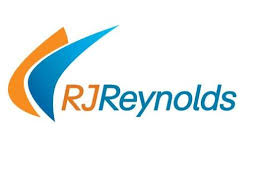Application Hosting
Learn about our software

















Data migration is much more than moving data from point A to B. It is enriching your new system with data that supports decisions and operations. You need a team that knows the business and processes as well as the tools to build a plan that works.
The source system needs to be mined for value, not just data. This takes significant business knowledge, system knowledge and migration experience to ensure successful migration while mitigating common pitfalls. We offer the shortest data-freeze periods in the industry.
Data transformation is a very complex process executed on your data. Rules, cross-references and translations need to be fully understood by the decision makers as well as the data technicians. Our web interface allows intermediate enrichment, validation and workflow.
Programmatic pre-validation prior to loading takes business and technical experience. There is no better or faster way to migrate data than to get it right the first time. We extract loaded data and compare every data point to maximize stakeholder.
Data migrations generally result from the introduction of a new system. This may involve an application migration or consolidation in which one or more legacy systems are replaced or the deployment of an additional system that will sit alongside the existing applications. Whatever the specific nature of any data migration, the ultimate aim is to improve corporate performance and deliver competitive advantage. Accurate data is the raw material that maximizes the value of enterprise applications. However, when existing data is migrated to a new target application, it can become apparent that it contains inaccuracies, unknowns, and redundant and duplicate material. And although the data in the source system may be perfectly adequate for its current use, it may be wholly inadequate, in terms of content and structure, for the objectives of the target system. Without a sufficient understanding of both source and target, transferring data into a more sophisticated application will amplify the negative impact of any incorrect or irrelevant data, perpetuate any hidden legacy problems, and increase exposure to risk.
Data migration is usually part of a larger project deliverable, and typically the majority of business attention is focused on the package selection and configuration rather than on ensuring that the data that populates the new system is fit for the purpose. There are some clear reasons why data migration subprojects tend to be “planned” so cursorily. Choosing the new system is an exciting, strategic business activity that usually entails working with new technologies, suppliers, and opportunities. In short, it is the sexy part of the project. In contrast, data migration planning is seen as a simple matter of shifting data from one bucket to another via a process that is a necessary administrative burden and an extra cost. Thus, planning is often left until too late and the required resources and the difficulty of the migration are frequently underestimated. Migration is regarded as a mundane and thankless task, and in some instances, people know they are migrating themselves out of a job.
Organizations planning a data migration should consider which style of migration is most suitable for their needs. They can choose from several strategies, depending on the project requirements and available processing windows, but there are two principal types of migration: big bang migrations and trickle migrations. Big bang migrations involve completing the entire migration in a small, defined processing window. In the case of a systems migration, this involves system downtime while the data is extracted from the source system(s), processed, and loaded to the target, followed by the switching of processing over to the new environment. This approach can seem attractive, in that it completes the migration in the shortest-possible time, but it carries several risks. Few organizations can live with a core system’s being unavailable for long, so there is intense pressure on the migration and the data verification and sign-off are on the critical path. Businesses adopting this approach should plan at least one dry run of the migration before the live event and also plan a contingency date for the migration in case the first attempt has to be aborted. The reality is that few organizations ever do this. Big bang migrations are most often planned as a oneoff requiring a shutdown over a weekend or a public holiday, meaning that the quality of the migrated data is often compromised.
A combination of trends is accelerating the need to manage data migration activity more effectively as part of a corporate data quality strategy: